Rosemary is a perennial herb that is known because of its aroma and sturdy and tough nature. There are different purposes for which you can use the leaves of a rosemary plant. You can easily get a rosemary tree and plant it in your garden as well. But, before that, you must do proper research about the requirements of this plant and what are its stress signs.
A common symptom of the rosemary plant stress is the leaves becoming brown. To know more reasons, keep reading this post ahead as it will take you through some of the common reasons.
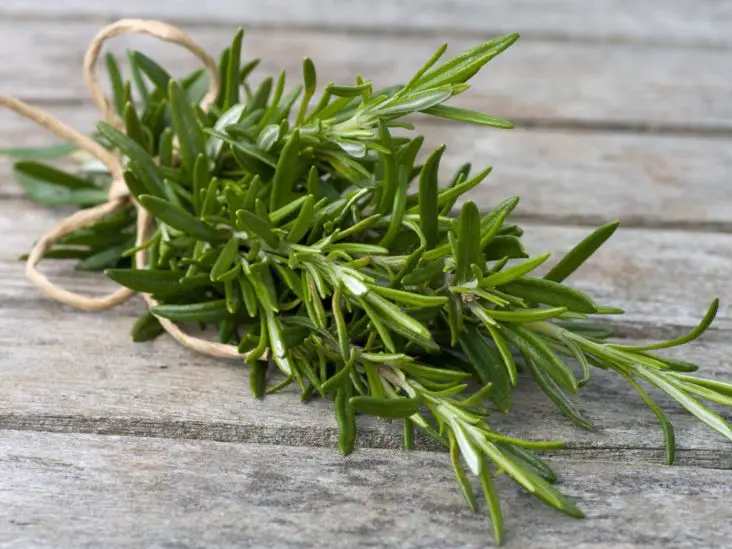
Why is Rosemary leaves turning brown?
There can be various reasons for your rosemary leaves to turn brown. Here are some of the important causes mentioned below as follows:
1. Humidity
Humidity is one of the most important reasons why the leaves of your rosemary plant may turn brown. Rosemary grows in open areas and can tolerate a good breeze across the foliage which keeps the plant dry and reduces the chances of fungal infection which can lead to the color change of leaves.
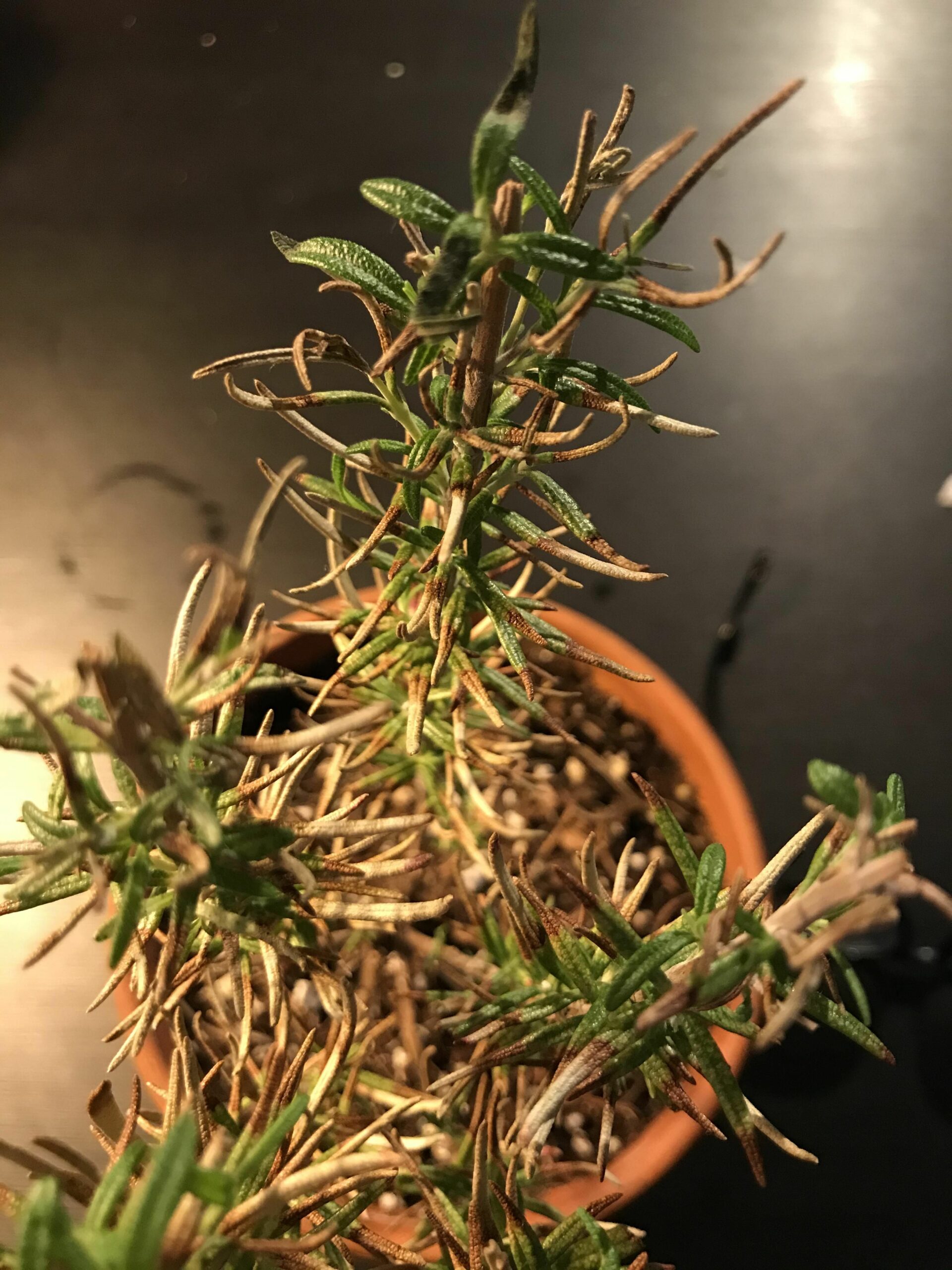
If you plant your rosemary in a container or pot, you must consider the microclimate. Pots that are located in the corner of the patio or are encircled by other plants which are very close can lead to a humid climate that can’t be tolerated by the rosemary.
How to revive?
The best solution to this is keeping containers at a distance of 2-3 feet for the already grown rosemary plants. This space allows better airflow within the leaves for a dry environment. It is also recommended for you plant them at a distance of 2-3 feet from other plants if you grow them in the garden borders.
This will make sure that the rosemary plants get ample space for their roots to grow. They won’t have to compete with any other plant for nutrients, space, or water so that the plant can remain healthy and away from any disease.
2. High rainfall
High rainfall can become a problem as it is quite similar to the effects of overwatering. Rosemary initially grew at places with low rainfall but it can still grow in moderate climates which have higher rainfall than Mediterranean areas. The most important thing to know when growing rosemary in high rainfall areas is amending the soil with ample grit, or soil while planting for proper drainage to maintain the dryness of the roots.
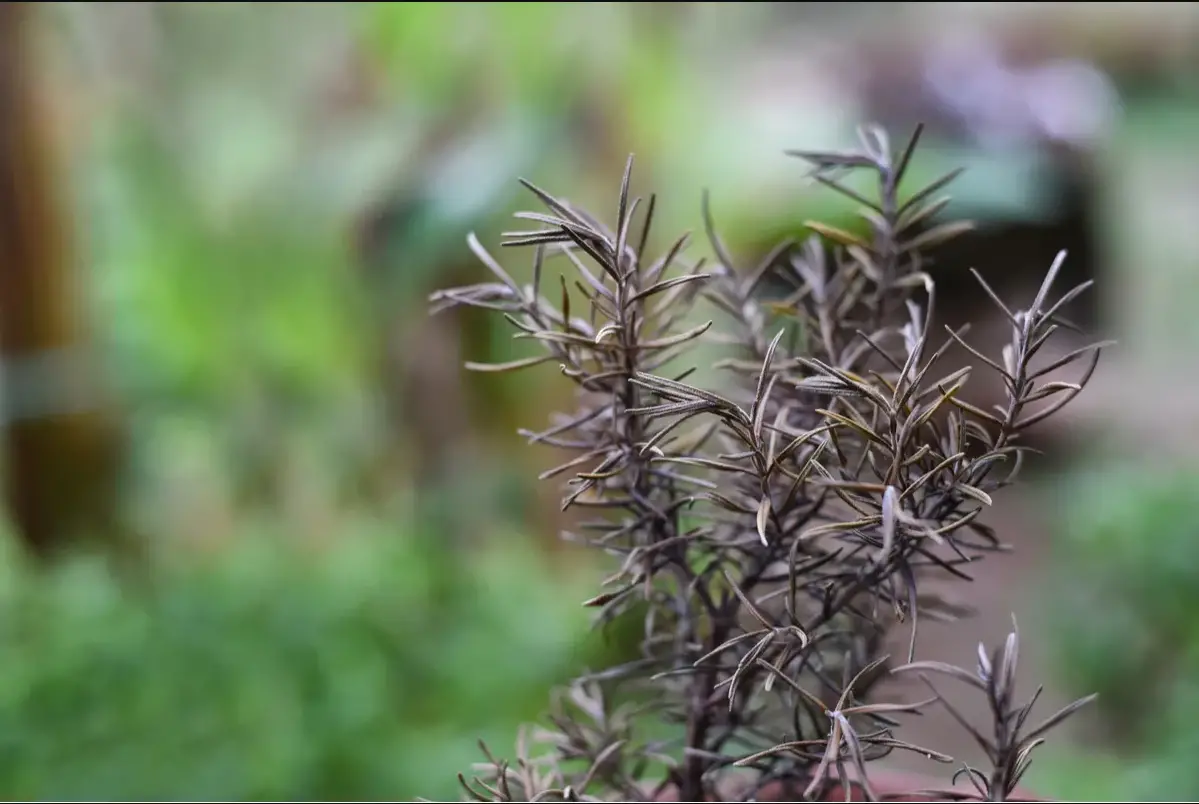
Solution
In areas that have high rainfall, containers and pots are suitable to grow rosemary. Later, you can shift them to the garden soil. If you see the rosemary plant turn brown after rain, you must move the pot to a sheltered area for some days until the weather becomes sunnier and can let the soil dry out to help the plant in recovering.
If you plant rosemary in garden soil then, it may be required for you to shift the rosemary plant to a pot using a potting mix that is made with grit or sand because quick drainage helps in mitigating the effects of high rainfall.
3. Slow-draining soils
When you plant rosemary, you need to make sure that the soil can drain out water quickly. Rosemary plants grow well in rocky or sandy souls on the hillsides which aren’t effective in retaining water. Stony or sandy soul has a porous structure that allows good drainage which can keep the roots dry and prevent them from rotting.
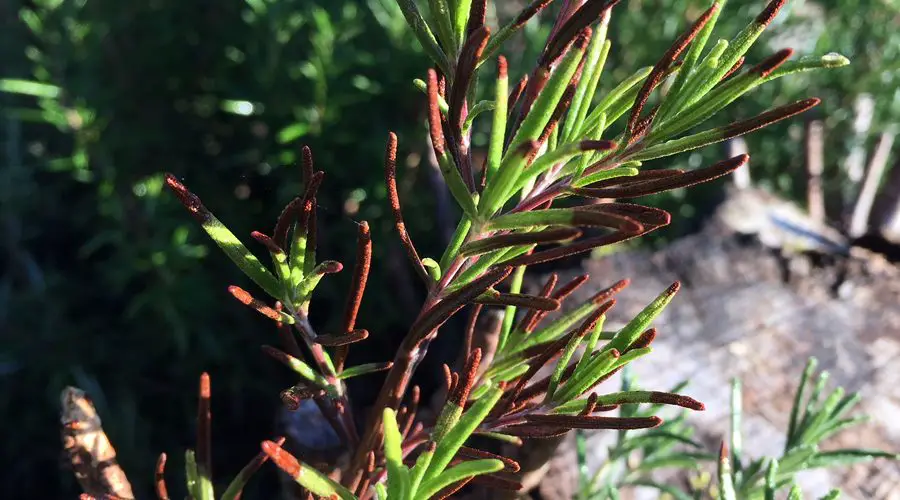
Solution
If you want your rosemary plant to grow successfully, you must amend the soil conditions of its surrounding environment. It is very easy to do and all you need is horticultural grit builders sand or horticultural sand. You can get them both online as well as in garden stores. The horticultural sand has bigger particles than all other sand types which increase the size of pores in the soil and allow oxygen easily into the soil for better respiration of roots. This further allows rainfall to drain quickly.
4. Under watering
Just as overwatering is harmful to rosemary plants, under watering also has its cons. If you leave your rosemary plant under-watered for a long time, it will become dry and twig-like.
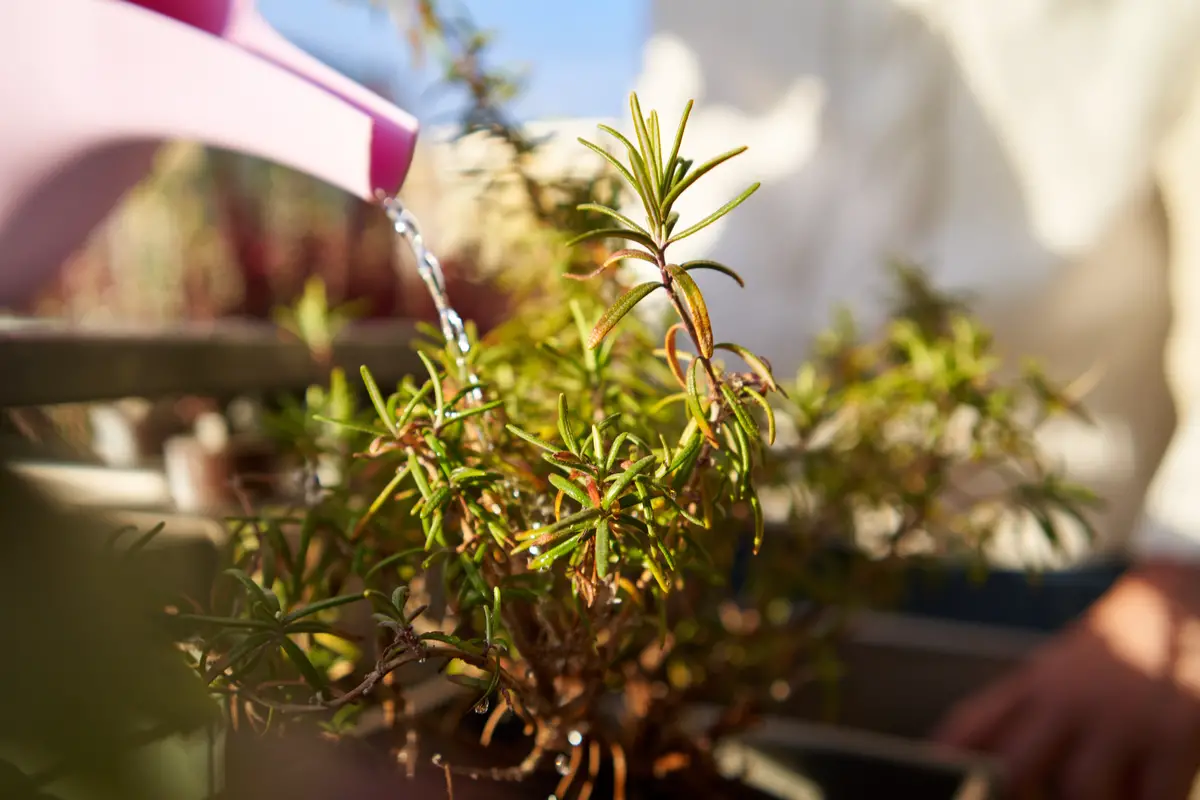
Solution
The easiest and most effective solution to this is adding water and making sure that you soak your plant in water for a long time. Cut off all dry brown areas and feed roots using a liquid fertilizer that is made of seaweed and helps the plant to recover. Make sure you do this every week for two weeks straight and you’ll find new growth appearing.
5. Insufficient light
Rosemary plants must be planted in an area where they get good exposure to sunlight. They need proper sunlight to thrive well. If you keep them under shade, the soil will not dry out properly, and all problems related to overwatering will start disturbing the growth of your rosemary plant. If you find that the foliage starts looking yellow, it could be a sign that your plant is getting a lot of shade and you must move it as soon as possible.
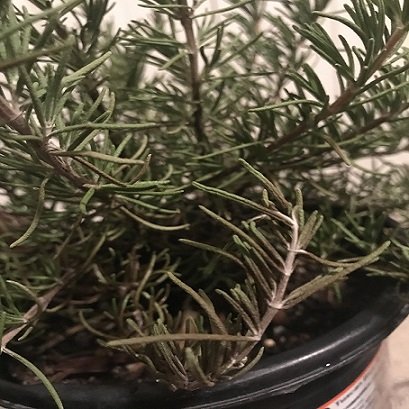
Solution
Rosemary plants require a minimum of 6 hours of sunlight every day, but they prefer to be in direct sunlight for 8 hours. Anything less than this hurts the health of your rosemary plant.
Conclusion
These are the common causes why you might find the leaves of your rosemary plant to turn brown. You must use the right fix to get rid of the cause as soon as you find it. Leaves turning brown is a symptom of bad health of a plant and you shouldn’t be negligent about it. Hence, as soon as you’re able to get assured about the cause, find out the right solution and start treating your plant. This post can be very useful to use as it has solutions mentioned for every problem you find in your rosemary plant.

![5 Reasons for Rosemary Leaves Turning Brown [How To Revive]](https://www.plantsofmerit.org/wp-content/uploads/2022/08/5-Reasons-for-Rosemary-Leaves-Turning-Brown-How-To-Revive.jpg)